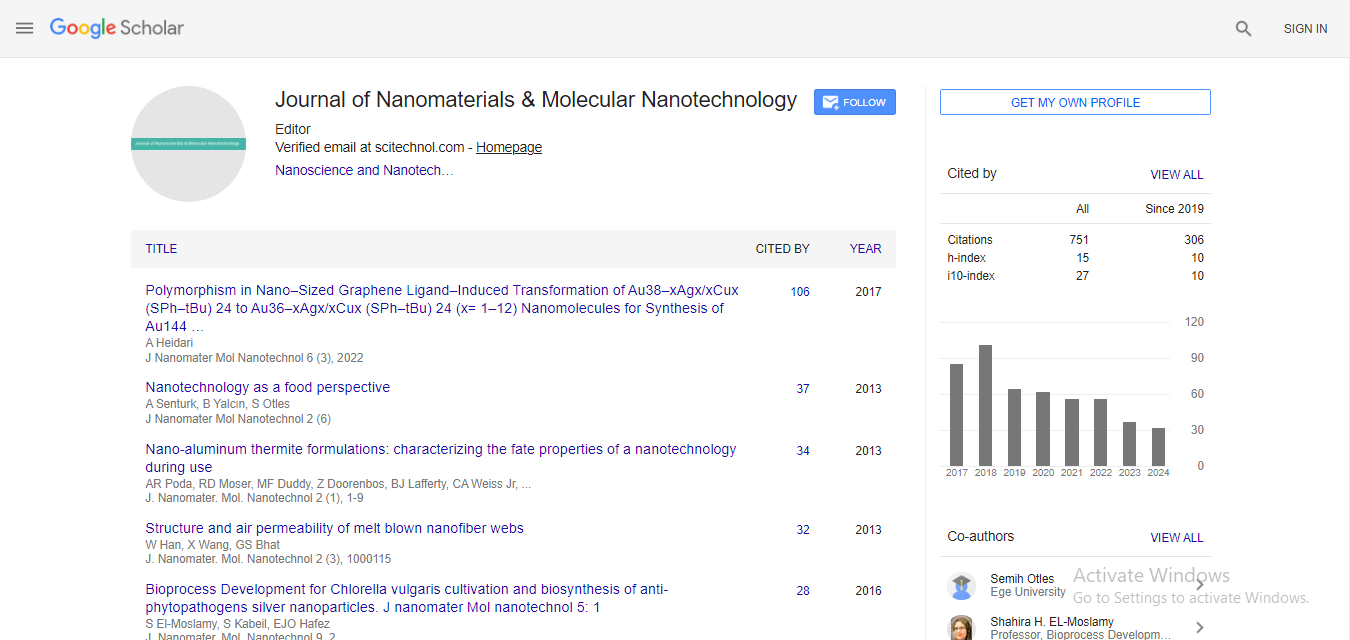Synthesis of zeolite and γ-alumina nano particles as ceramic membrane for desalination
Heri Setiawan
Bandung State Polytechnic for Manufacturing, Indonesia
: J Nanomater Mol Nanotechnol
Abstract
Membrane-based desalination technology is one of the solutions to provide clean water supplies. This technology can resolve the shortage from ground and surface water supplies, to meet the needs of growing human population. Ceramic materials gamma alumina (γ-Al2O3) and zeolites are known to have mechanical strength, thermal and chemical stability better than organic materials, as well as having the characteristics of high surface area and molecular sieve, which can potentially be used as desalination membrane. In this work γ-Al2O3 and zeolite nanoparticles were synthesized and then were coated on the surface of the porous geopolymer support to be used as desalination membranes. The γ-Al2O3 was synthesized using polyethyleneglycol (PEG) 6000 as template (γ-Al2O3+PEG) through aging in ultrasonic bath for 4 hours in form of white powder. resulting morphology particles was rod with diameter about 10-20 nm and 40-70 nm in length, surface area reached to 326.26 m2/g, total pore volume of 0.10 cm3/g and average pore diameter about 2.10 nm. Zeolite nanoparticles were obtained with composition 6Na2O: 0,55Al2O3: SiO2: 150H2O in the form of white powder with particle size varied in the range of 100-400 nm, surface area reached to 97.32 m2/g, total pore volume of 0.80 cm3/g and average pore diameter of 11.19 nm. The support was made of geopolymer materials (natural zeolites, silica sand and activated carbon with metakaoline as binder) and has porous structure, with dimensions size ±5 cm in diameter and ±0,8 cm in thickness. The membranes were prepared by three kinds of coatings, the γ-Al2O3 coating (Al membrane), zeolite coating (Z membrane), and of γ-Al2O3 and zeolite (Al+Z membrane). The performance of membranes was evaluated by measuring the rejection and flux values of saline water NaCl 1% (w/v) that was passed through the membrane. Zeolite membrane (Z membrane) demonstrated the highest salt rejection, amounted to 87.88%, whereas the membrane consist of γ-Al2O3 and zeolite (Al+Z membrane) resulted in rejection of 68%. The γ-Al2O3 membrane (Al membrane) resulted in the lowest rejection, reached to 57.14%. The highest flux was obtained by the Al membrane, reached to 3.43x103 L/m2h on the 54.29% rejection value; whereas the Z membrane resulted in 3.28x103 L/m2h and 87.88% on flux and rejection values, and the Al+Z membrane showed the lowest flux of 2.91x103 L/m2h at 62% rejection value. It can be concluded that the synthesized γ-Al2O3 and zeolite is an alternative ceramic materials to be used as desalination membrane.
Biography
Email: herisetiawan529@gmail.com
 Spanish
Spanish  Chinese
Chinese  Russian
Russian  German
German  French
French  Japanese
Japanese  Portuguese
Portuguese  Hindi
Hindi 



